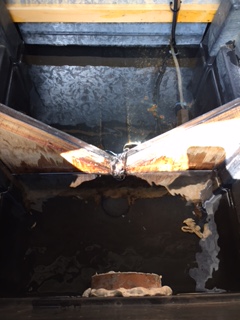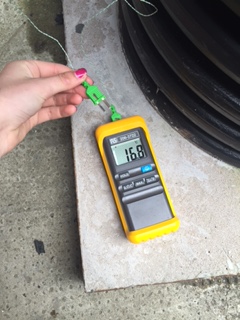TDRM has the potential to be a hugely utilised material for many different situations, drainage is only scratching the surface!
- Sound barriers
- Pavement design
- Railways
Therefore it may be useful to actually find out a little more about the material we have been working with.
So we carried out a Particle Distribution Test.

PDT
From the image above you can see that the sieves are stacked on top of each other. the sieves with the largest diameter are placed at the top and the smallest at the bottom. Once the lid is clamped on, the stack is then vibrated to create movement within the material to encourage it to filter through the sieves.
The sieves used were; 37.5mm, 28mm, 20mm, 14mm, 10mm, 8mm, 5mm, 2.36mm, 1.18mm
After repeating the experiment with three different samples the results were plotted (see below)

Particle Distribution Data
when we received the material we were quoted a size of 20mm… well from the results I think its pretty clear is certainly not all 20mm! The material mostly is varied between 10-14mm. therefore if we can further our research and place this material in drains on the Trunk road it would be idea to source a different supplier or separate the material so we can use the larger particles sizes, that being no smaller than 20mm.


